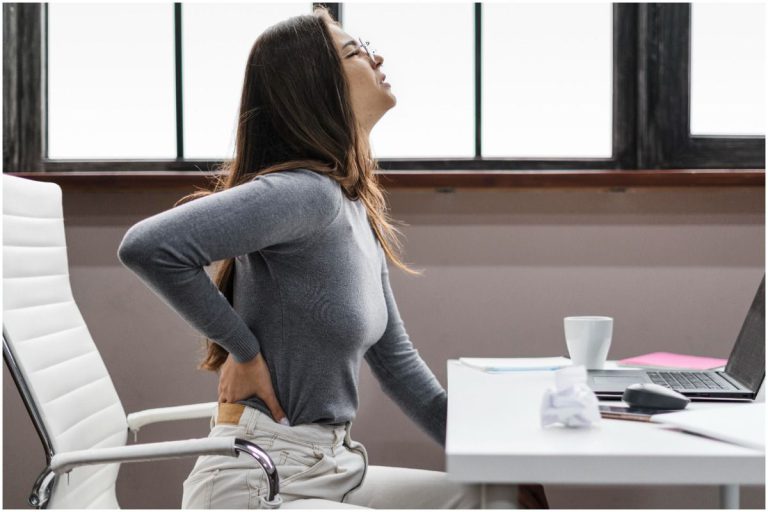Can you Correct Years of Bad Posture? | The Realm

by: Cam
Date: 11 Mar 2023
Introduction
The maintenance of proper posture is a fundamental aspect of ensuring overall well-being. Good posture can aid in decreasing lower back discomfort, improving respiration, and even aiding digestion.
Poor posture can have a variety of causes, including prolonged sitting, carrying heavy loads, and wearing high heels.
Over time, such posture can lead to various issues, including back and neck pain and headaches. Fortunately, it is possible to make adjustments and improve posture.
Ways To Correct Your Bad Posture
Use a posture corrector
Posture correctors are devices worn around the upper body that assist in developing muscle memory for good posture.
They employ gentle traction of the shoulders that can help in the alignment of the spine and provide alleviation of discomfort.
Quality mattress
Mattresses designed to promote better posture can have a significant impact in relieving back and neck pain.
These mattresses can reduce discomfort while standing, walking, and sitting by aligning the spine, allowing individuals to improve their posture naturally.
Strengthening exercises
Maintaining muscle strength in the back, shoulders, and torso area can help to optimise posture and reduce discomfort.
Engaging in yoga, pilates, and strength training can be beneficial for focusing on the appropriate muscles.
Try Tai-chi
Tai-chi emphasises the midsection of the body, that is, the abdomen and lumbar region. One of the foundational exercises this practice teaches is proper spinal alignment, referred to as “spinal arrangement.”
Practise deep breathing
Consciously engaging in deep breathing and paying attention to posture can help with improved posture over time. Always make a conscious effort to be aware of body alignment and make modifications as necessary.
Avoid wearing heels
The wearing of high heels can disrupt one’s sense of balance, leading to a change in gait and resulting in increased muscular stress and poor posture.
Impacts of Bad Posture
Back and neck pain
One of the well-recognised consequences of inadequate posture is the imposition of strain upon the upper and lower back. Hunching forward can compress the region between the shoulder blades and lead to the weakening of the back muscles.
It may be a sign of poor posture if you experience aches below the neck and around the tailbone after extended work periods. Maintaining an improper posture can place strain on your back muscles, which can lead to neck discomfort.
Shallow breathing
Prolonged poor seated posture can compress the diaphragm and abdominal muscles against the ribcage and sternum, resulting in impaired respiration and reduced lung capacity.
Chronic disability
The journal Ergonomics shows that poor posture, often acquired through extended periods of sitting in front of a computer, can eventually cause chronic disability. Over time, a slumped or slouched posture can weaken the spine and increase its vulnerability to injury.
Negative mood
Prolonged poor posture can stress muscles and joints, leading to fatigue and a decreased capacity to complete tasks. This fatigue can also result in a low or negative mood.
How Your Posture Affects Your Health
Poor posture can be harmful to your health. The effects of slumping or slouching include:
- Musculoskeletal misalignment
- Your spine becomes more fragile and prone to injury as a result of wear and tear
- Pain in the neck, shoulders, and back.
- You will become less flexible.
- Affect the way your joints move
- Increasing your risk of falling and affecting your balance
- Your food won't digest as well
- Breathing becomes more difficult
Frequently Asked Questions
Here are some yoga poses for your posture
Pose in a seated twist.
Pose of a cobra.
Carriage of Downward Facing Dog.
Pose on the plank.
Posing as a warrior.
Yoga Mudra poses while standing.
The posture of a camel.
The fish pose.
Sleeping in the supine position (back) has been identified as a healthy posture for optimal sleep. It helps with spinal alignment and alleviates pressure on the limbs, making it an ideal choice for individuals suffering from neck or lower back pain.
Engaging in physical activity of any variety has the potential to enhance one’s posture, yet certain forms of exercise can be particularly beneficial. Examples include yoga, tai chi, and any class emphasising body awareness. Additionally, core-strengthening practices are also advisable.

